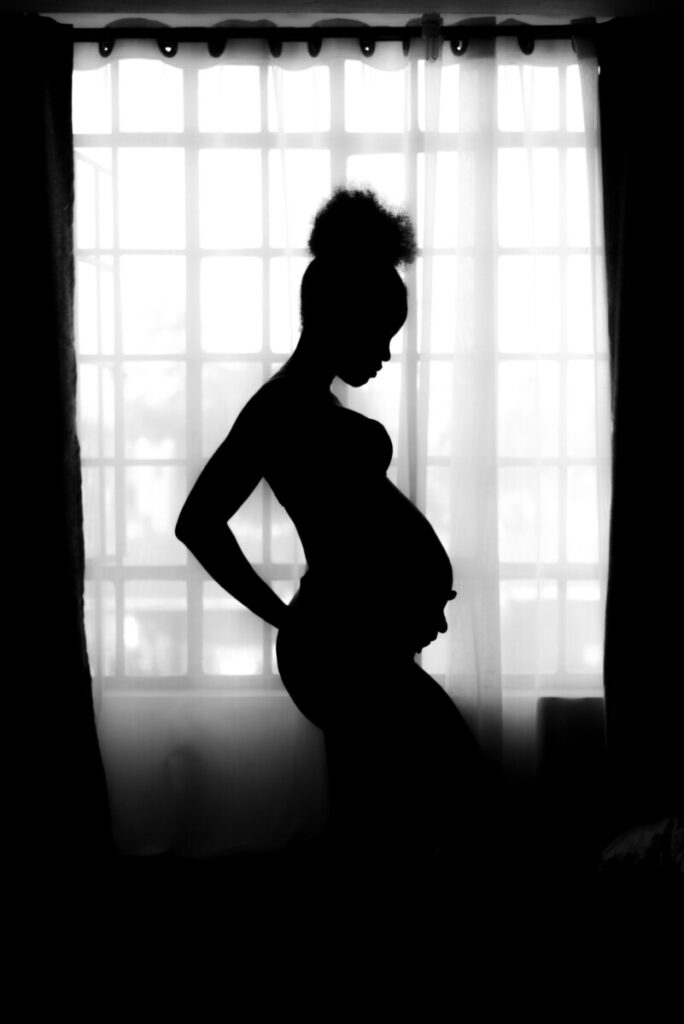“When I went to the toilet, something like a ball with strings came out. I could not tell what it was so I put it in a paper bag I had in my handbag and threw it into the pit latrine,” said Cheptoo, a worker in a flower farm in Salgaa, Nakuru.
Few weeks into May 2012, she began to experience profuse vaginal bleeding. Cheptoo did not have money to go to the hospital so she decide to use sanitary towels until she had earned enough at the farm to consult a doctor. The situation worsened over time and came along with seething abdominal pain. Distressed, she reported to the organization’s nurse, Beatrice. The medical practitioner did a physical examination and confirmed that Cheptoo was pregnant. A prescription was given to stop the bleeding. The medication was effective but after two weeks, the bleeding and pain started again. This time, Beatrice referred her to the Provincial District Hospital (PDH) in Nakuru Town. Here, the doctor advised Cheptoo to begin on pre-natal care at the hospital as this would manage similar complications during her pregnancy.
 Cheptoo’s husband, James was working as a security guard at the Gogar Farm in Rongai. Aware of their grand expectation, he worked extra shifts and did other casual jobs for a financial boost. Cheptoo was worried as to why the pregnancy had been so troubling unlike her first. However, just like any mother, she hoped for the best and devotedly continued with pre-natal care.
Cheptoo’s husband, James was working as a security guard at the Gogar Farm in Rongai. Aware of their grand expectation, he worked extra shifts and did other casual jobs for a financial boost. Cheptoo was worried as to why the pregnancy had been so troubling unlike her first. However, just like any mother, she hoped for the best and devotedly continued with pre-natal care.
Four months later, the doctor at PDH informed Cheptoo that she would probably give birth in November; a month later than she expected, if he bleeding continued.
“It would give us time to buy more new baby items and clothes as well,” Cheptoo said.
A month shy of her due date, the bleeding started.
“Niliskia ni kama mtoto anatoka. (It felt as though the baby was coming out),” she said.

She was rushed to Sister Mazolda clinic where she was given Buscopan and a physical test conducted. On feeling that the stomach was empty, the nurse sent her to Rongai Health Centre for further checkup. The doctor felt no child, as well. Later, Cheptoo went for scan at PDH. The scan was done but the doctor who had the skills to interpret the results was absent. They administered medicine to halt the bleeding and since she could not afford to be admitted, they asked her to return after two days. The following morning, the bleeding was gone so she report to work. At around mid-day, she went to the toilet and this is when something round, black, with strings came out, which she wrapped in a paper bag and threw in the toilet.
When the scan results were finally out, she was informed that her pregnancy was not growing. This was because her kidney had dropped on the foetus and needed to be returned to position.
“However, the pregnancy must be terminated,” the doctor declared.
“I had never even heard of a kidney dropping. I was shocked beyond words,” she mumbled, struggling to not succumb to tears. She explained the toilet experience and after a few tests, the doctor confirmed that what she had thrown into the latrine was her child.
“So what may have happened exactly? If that was her baby, why did it look far from a human being? How could her kidney dropping have gone unnoticed for so long?” Cheptoo still asks till today.
The condition.
Floating kidney (nephroptosis) is a condition where the kidney descends five centimeters from its usual position. It is also referred to as renal ptosis, hyper mobile or wandering kidney. The kidney can drop to levels as low as the pelvis, even coil around other organs; the ureter, for example. This leaves the kidney and some other affected organs malfunctioned. In the end, waste is not effectively eliminated from the body. Accumulation of wastes inhibits production of ova (oogensis) therefore preventing menstruation and pregnancy. It also inhibits efficient filtering of bacteria out of the blood causing blood poisoning (Septicemia).
 This disorder is more common in women than men. Those mostly affected are thin women with long waists, just like Cheptoo. The leading cause is deficiency in potassium which strengthens the tissue that supports the kidney (perirenal fascicle). Exerting too much pressure onto your abdomen area can also cause the disorder. This includes hard blows onto the abdomen area and heavy-weight lifting.
This disorder is more common in women than men. Those mostly affected are thin women with long waists, just like Cheptoo. The leading cause is deficiency in potassium which strengthens the tissue that supports the kidney (perirenal fascicle). Exerting too much pressure onto your abdomen area can also cause the disorder. This includes hard blows onto the abdomen area and heavy-weight lifting.
Symptoms include very high blood pressure, chills, nausea, severe abdominal pains, pain while passing urine or even having blood in urine. The situation is worse when a woman is pregnant because the body has to struggle to sustain both the mother and child. The expectant woman will retain much more wastes and thus have much higher blood pressure, leading to hypertension and fluid retention, and protein in the urine (preeclampsia). Did you know that, women with HBP and excess protein in their urine face a 60% risk of infant death during their pregnancy?
Research on kidney cancer in the United Kingdom showed that some people live with nephroptosis for years without knowing.
“It is asymptomatic. When symptomatic, however, it is characterized by violent, sharp pains that radiate into the groin,” said Amir Javed, a Nephrologist based in London.
This disorder cannot be diagnosed when lying down. This is because the kidney drops when you stand but returns to position when you lie down. The abdominal pain and pressure even subsides in the latter position. CT Scans and ultra sounds cannot detect it. A physical examination when standing and an x-ray on both the kidney and bladder should be done. For pregnant women, it is recommended that they have a credible medical practitioner monitor their blood pressure, creatinine levels, blood urea levels, protein levels, cholesterol and urine potassium and mineral levels. This should continue for the first 32 weeks of the pregnancy. Women planning to have children should consult a nephrologist before getting started.
Laparoscopic Nephropexy surgery can be done to re-position the kidney. When floating kidney overcomes an expectant woman, the doctor is required to induce birth or recommend a caesarian section. The born one may then be placed in the neonatal intensive care unit. Other less expensive measures may be gaining weight or doing exercises that tighten the abdomen.
“I feel lucky to be alive,” Cheptoo said smiling.
*Names changed/referenced on first name basis to protect identity*
PUBLISHED:http://issuu.com/nairobiaiesec/docs/cb5




1 Comment
This post sounds a little rushed-you’re often quite precise with your musings.